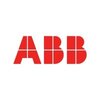R&D Design Engineer
10+ R&D Design Engineer Interview Questions and Answers

Asked in Synopsys

Q. What are semaphores, differnce between them, Different OSI layers , deadlock protocols, ACID protocols in dbms
Semaphores, OSI layers, deadlock and ACID protocols in DBMS
Semaphores are used for process synchronization and communication
OSI model has 7 layers: Physical, Data Link, Network, Transport, Session, Presentation, Application
Deadlock protocols prevent processes from entering a deadlock state
ACID protocols ensure database transactions are reliable and consistent

Asked in DCM Shriram Industries

Q. What are the different types of automotive engines and their transmission systems, as well as the various types of gearboxes? Additionally, could you explain the concepts of compression ratio, indicated horsepo...
read moreOverview of automotive engines, transmission systems, gearboxes, and key performance metrics.
Types of automotive engines: Internal Combustion Engines (ICE), Electric Engines, Hybrid Engines.
Transmission systems: Manual, Automatic, CVT (Continuously Variable Transmission).
Types of gearboxes: Synchromesh, Dog-Engagement, Dual-Clutch.
Compression ratio: Ratio of cylinder volume at bottom dead center to volume at top dead center, affecting efficiency and power.
Indicated horsepower...read more

Asked in Synopsys

Q. What is the difference between linear and non-linear data structures?
Linear data structures have a sequential arrangement of elements while non-linear data structures have a hierarchical arrangement.
Linear data structures have a fixed number of elements and are easy to traverse.
Non-linear data structures have an arbitrary number of elements and are difficult to traverse.
Arrays, linked lists, and stacks are examples of linear data structures.
Trees, graphs, and heaps are examples of non-linear data structures.

Asked in DCM Shriram Industries

Q. Can you describe the materials you have used, including their grades and material properties, as well as the IS standard under which they were manufactured?
I have worked with various materials like steel, aluminum, and polymers, focusing on their properties and relevant IS standards.
Steel (IS 2062): Used for structural applications, known for its high tensile strength and durability.
Aluminum (IS 733): Lightweight and corrosion-resistant, ideal for aerospace and automotive applications.
Polycarbonate (IS 12866): A high-impact plastic used in safety glasses and electronic housings, known for its transparency and toughness.
Stainless...read more

Asked in TCS

Q. What is the difference between C and C++?
C++ is an extension of C with object-oriented programming features.
C++ supports classes and objects while C does not.
C++ has better support for polymorphism and inheritance.
C++ has a standard template library (STL) for data structures and algorithms.
C++ allows function overloading while C does not.
C++ has exception handling while C does not.

Asked in Synopsys

Q. What are the steps associated with a client-server connection request?
Steps for client server connection request.
Client sends a connection request to the server.
Server receives the request and sends a response.
Client receives the response and establishes a connection.
Connection is maintained until terminated by either party.

Asked in ABB

Q. Which simulation software have you used?
I have experience using simulation software such as ANSYS, SolidWorks Simulation, and COMSOL Multiphysics.
Experience with ANSYS for structural analysis
Proficient in SolidWorks Simulation for mechanical design validation
Familiarity with COMSOL Multiphysics for multiphysics simulations

Asked in Synopsys

Q. Given a binary tree, return the boundary traversal of it. The boundary traversal is defined as follows: The left boundary is defined as the path from the root to the left-most node. The right boundary is define...
read moreBoundary traversal of a binary tree is the process of visiting the nodes on the boundary of the tree.
Start with the root node and traverse the left boundary nodes from top to bottom.
Traverse the leaf nodes from left to right.
Traverse the right boundary nodes from bottom to top.
Exclude the leaf nodes that are already traversed in the second step.
Repeat the above steps for all the subtrees of the binary tree.
Share interview questions and help millions of jobseekers 🌟


Asked in Allied Engineers

Q. What is the difference between pressure and stress?
Pressure is the force applied per unit area, while stress is the force applied per unit area of a material.
Pressure is a scalar quantity, while stress is a tensor quantity.
Pressure is measured in units of force per unit area, while stress is measured in units of force per unit area of a material.
Pressure is a measure of the external force applied to an object, while stress is a measure of the internal force within a material.
Examples of pressure include atmospheric pressure, ...read more

Asked in Synopsys

Q. Given a binary tree, return the left view of it.
The left view of a binary tree shows the nodes that are visible when the tree is viewed from the left side.
Traverse the tree recursively from left to right
Print the first node encountered at each level
Example: For tree with root node A, left view is A, B, D, G

Asked in Synopsys

Q. Given the head of a singly linked list, return the middle node of the linked list. If there are two middle nodes, return the second middle node.
To find the middle of a linked list, use two pointers - one moving at twice the speed of the other.
Use two pointers - slow and fast
Slow pointer moves one node at a time, fast pointer moves two nodes at a time
When fast pointer reaches the end, slow pointer will be at the middle

Asked in ABB

Q. What is the difference between tempering and annealing?
Tempering is a heat treatment process to increase toughness and reduce brittleness, while annealing is a heat treatment process to soften material and improve ductility.
Tempering involves heating the material to a specific temperature and then cooling it quickly, while annealing involves heating the material to a specific temperature and then cooling it slowly.
Tempering is used to reduce internal stresses and improve toughness, while annealing is used to soften the material a...read more

Asked in Synopsys

Q. What is the difference between processes and threads?
Processes are independent programs while threads are lightweight processes within a program.
Processes have their own memory space while threads share memory space.
Processes communicate through inter-process communication while threads communicate directly.
Processes are slower to create and terminate than threads.
Examples of processes are web browsers, word processors, etc. while examples of threads are spell checkers, print spoolers, etc.

Asked in Synopsys

Q. Describe the producer-consumer problem.
Producer and consumer problem is a synchronization problem in computer science where multiple processes share a common resource.
It occurs when multiple processes try to access a shared resource simultaneously.
The producer produces data and the consumer consumes it.
The problem is to ensure that the producer does not produce data when the buffer is full and the consumer does not consume data when the buffer is empty.
Examples include printing documents, reading and writing files...read more

Asked in ABB

Q. Different type of coating?
Different types of coatings include anti-corrosion coatings, thermal barrier coatings, and decorative coatings.
Anti-corrosion coatings protect metal surfaces from corrosion and rusting.
Thermal barrier coatings are used to reduce heat transfer and improve energy efficiency.
Decorative coatings are applied for aesthetic purposes, such as painting a car or furniture.

Asked in ABB

Q. What materials are used for spring steel?
Spring steel is a type of high carbon steel used for making springs due to its high yield strength and resilience.
Spring steel is typically made from high carbon steel with a carbon content between 0.6-1.0%
It is known for its high yield strength and resilience, allowing it to return to its original shape after being bent or compressed
Common examples of spring steel grades include AISI 1070, AISI 1095, and AISI 6150
Interview Experiences of Popular Companies








Reviews
Interviews
Salaries
Users

















